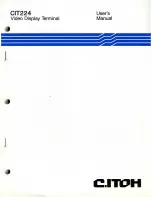
It is the owner’s sole responsibility to install and use the instrument and its sensor(s) in a manner
that will not cause accidents, personal injury or property damage. The user of this product is solely
responsible for observing safe boating practices.
Fuel type
: Navman petrol flow sensors (plastic) and FUEL 3100 instruments have been specifically
developed for use in marine applications with petrol (gasoline) inboard and outboard engines and
are not warranted for any other type of application. These sensors and instruments must NOT be
used with petrol EFI engines with a return line to the tank or with diesel engines.
Navman diesel flow sensors (metal) and DIESEL 3200 instruments have been specifically developed
for use in marine applications with diesel engines and are not warranted for any other type of
application. These sensors and instruments must NOT be used with petrol (gasoline) engines.
Fuel formulation
: Every effort has been made by the manufacturer to ensure that the materials
used in the Navman fuel flow sensor(s) will operate reliably with different fuel mixtures. The
manufacturer or its distributors can not be held responsible for fuel formulation or any affect this
may have on the performance and durability of the fuel flow sensor(s).
Back pressure
: A fuel flow sensor will create additional back pressure in a fuel system:
• In a petrol system (FUEL 3100): 1/2" of mercury at 19.8 US gallons /hour (75 litres/ hour) and 1"
of mercury at 39.5 US gallons per hour (150 litres/ hour).
• In a diesel system (DIESEL 3200): 0.3" of mercury at 25 US gallons /hour (100 litres/ hour) and
1.5" of mercury at 80 US gallons per hour (300 litres/hour).
It is the owners responsibility to ensure that fitting the fuel flow sensor(s) does not cause fuel
starvation which may lead to poor engine performance.
Fuel Computer
: Fuel economy can alter drastically depending on the boat loading and sea
conditions. The fuel computer should not be the sole source of information concerning available
fuel onboard and the electronic information should be supplemented by visual or other
checks of the fuel load. This is necessary due to possible operator induced errors such as forgetting
to reset the fuel used when filling the tank, running the engine with the fuel computer not
switched on or other operator controlled actions that may render the device inaccurate. Always
ensure that adequate fuel is carried onboard for the intended trip plus a reserve to allow for
unforeseen circumstances.
Specific requirements: Your boat’s fuel installation boat might be subject to specific requirements
(such as USCG, NMMA and ABYC guidelines or local laws), particularly if the boat is licensed,
surveyed, charted or inspected. It is the owner’s sole responsibility to install and use the instrument
and its sensor(s) in compliance with these requirements.
NAVMAN NZ LIMITED DISCLAIMS ALL LIABILITY FOR ANY USE OF THIS PRODUCT IN A WAY THAT
MAY CAUSE ACCIDENTS, DAMAGE OR THAT MAY VIOLATE THE LAW.
Governing Language
: This statement, any instruction manuals, user guides and other information
relating to the product (Documentation) may be translated to, or has been translated from,
another language (Translation). In the event of any conflict between any Translation of the
Documentation, the English language version of the Documentation will be the official version of
the Documentation.
This manual represents the FUEL 3100 and DIESEL 3200 as at the time of printing. Navman NZ
Limited reserves the right to make changes to specifications without notice.
Copyright © 2004 Navman NZ Limited, New Zealand. All rights reserved. Navman is a registered
trademark of Navman NZ Limited.
Important






































